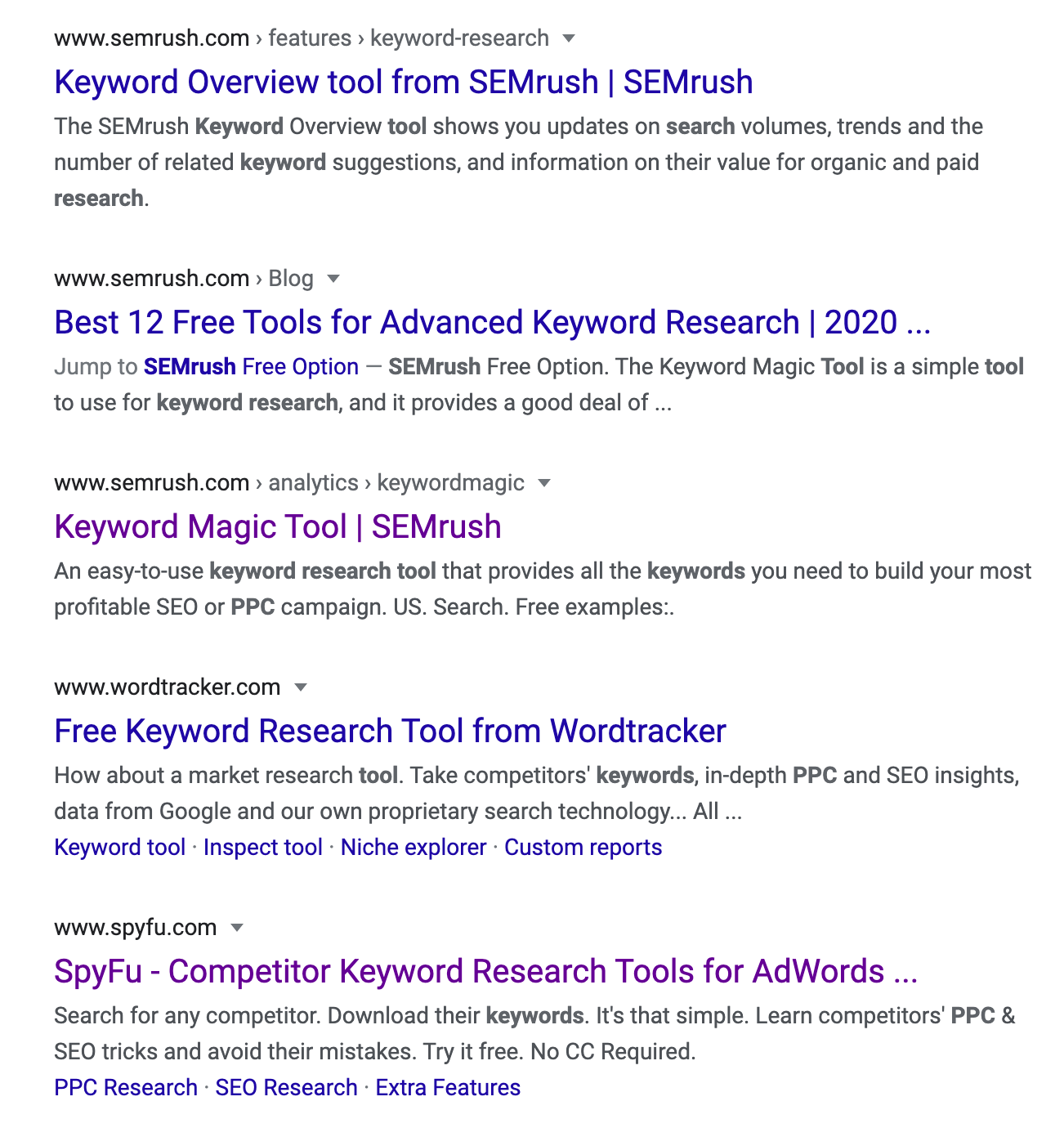Bryanna Kokaly
Project Manager
“Do we outrank our competitors on Google?” It’s a question that’s often asked internally by brands, but not so easily answered for both SEM novices and veterans alike. Certainly, it’s more complicated than “Yes” or “No.”
This blog post attempts to shed some light on the subject with crucial resources, strategy and tips. When implemented properly, you can increase market share.
How to Rank on Google
Rankings, and how they’re determined, have come a long way since Google’s launch in 1998. However, the primary goal for Google’s algorithm continues to be providing the most relevant information to the user possible. Today, the search giant uses more than 200 factors to determine how a website or webpage should rank for an inputted query.
While this post doesn’t scrutinize each factor, the following list highlights many crucial takeaways for how to rank on Google.
- Quality of website content (Google has developed a 168-page guide that exhaustively outlines what this means)
- Relevance of the website in relation to the query
- Speed and user experience of the website
- How valuable the website content is in relation to other websites
These four factors can be broken down into smaller subfactors. For now, however, they’ll do well as a foundation when comparing your brand to competitors and working to increase market share.
Tracking Your Results on Google
The first step in this process is to determine which keywords align with your brand and business goals. Start with keywords that you already rank for–at least 1,000 monthly queries. This could be where you slightly lag behind competitors or are just ahead and need to gain ground. You should also look at non-branded keywords, which are search phrases your target audience query at the top of the funnel. In other words, where awareness of your brand and offerings might be low.
As an example, a keyword might be “SEM keyword research tool.”

When you query this on Google the top organic results are from four competing brands. Your brand might be faced with the same challenge. Build a list of these keywords and keep track of the results.
You can validate your position using the Google search console if you already rank for the term.
Moz and Spyfu offer tools to find out how your competitors rank to create a more effective keyword list. More specifically, Spyfu allows you to perform research without setting up an account or providing an email. You can even use it to track your keyword list on an ongoing basis.
To easily track results against your competitors, it’s probably best to sign-up for a service such as those provided by SEM Rush, Spyfu and BrightEdge. Mindgruve leverages BrightEdge for all its clients.
Eventually, you’ll have a list of keywords that correspond to search volume and “difficulty.” If possible, focus on high volume, low difficulty keywords early on for quick wins.

Why Are Your Competitors Outranking You?
If you’re losing the rankings battle it’s time to roll up your sleeves and dig in. The tools mentioned earlier will certainly help, but you should also look at the following:
- Depth of content. You may have 1 webpage or blog post that covers a specific topic or set of keywords while your competitors have hundreds.
- Domain authority. Have your competitors been online longer? Are they larger companies? Are they leading providers of the products or services in the industry?
- Inbound links. Think of a link like a vote. It says “I believe this website has value, please go and visit.” Do your competitors have more inbound links? Mindgruve has many clients that outrank competitors because they boast tens of thousands of inbound links as opposed to just 100s or even 1000s.
- Well-constructed pages. Do your competitors do the small things right? Do page titles correspond to keywords? Are the meta descriptions complete? These simple tricks of the trade add up fast.
How to Beat Your Competitors on Google
Once you’ve determined why your competitors outrank you on Google, put a long-term plan together to turn the tables. At this point, you’ll want to carefully choose your target keywords.
- Select keywords with which you can demonstrate expertise, already rank and can close content gaps with your competitors.
- Create relevant content that resonates with your target audience. This might include but isn’t limited to video, imagery, whitepapers and infographics that can be incorporated into your website. You’ll see even better results should your competitors lack in any of the same areas.
- Fix any issues with your website that could lead to small wins. As an example, do you have webpages that target keywords not included in the titles or H1 tags?
- Do websites link to your competitors’ website that don’t link to yours as well? Visit them to determine if it’s possible to gain similar inbound links.
- Monitor the changes you’re making to determine if they’re having a positive effect on your brand’s Google rankings. Again, tools such as SEMRush and Brightedge are very effective.
When you want to beat your competitors on Google, SEM tends to be a long game. Your brand probably didn’t fall behind organically overnight and it won’t rebound by tomorrow. But with the right resources, strategy and a little elbow grease, claiming the top of the page is possible.